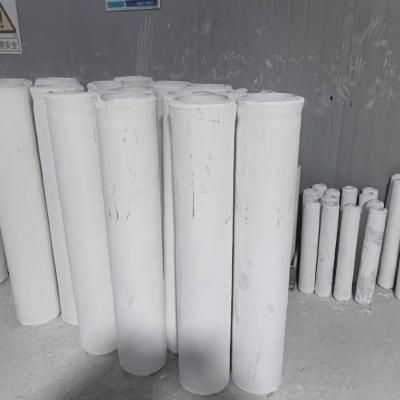
Specialized alloy manifest extraordinary morphological properties, positioning them suitable for a broad selection of purposes. Deriving from space and transportation to technological devices, these components are constantly enhancing to match the requirements of a innovative world.
- Their durability and antagonism to severe climates make them vital for top-tier systems.
- Additionally, technical ceramics grant merits in terms of endurance, supporting the growth of advanced mechanisms.
Constructing Matter: Tailored for Outstanding Functionality
Fabricated ceramics prevail in exacting assignments due to their exceptional features. Constructed from specially chosen raw compounds and experiencing exacting processing operations, these high-tech products demonstrate remarkable toughness, abrasion resistance, and endurance to severe climatic conditions, oxidation, and wear. From aviation parts to cutting tools, industrial ceramics provide unmatched capability across broad sectors. Their malleability allows enduring rough circumstances, warranting longevity and stability. As innovation progresses, the desire for quality compounds grows, cementing the essential status of industrial ceramics in shaping a stronger prospect.
Pioneering Ceramics: Reaching Compound Boundaries
Ceramics, boasting unparalleled durability and permanence, are at the start of a reformation. Innovative ceramics, created with careful control over their arrangement and internal architecture, defying the thresholds of all that is doable. These composites present a broad assortment of facets, rendering them preferable for rigorous realms such as outer space, healthcare, and electricity. From thin parts that hold up under extreme hotness to medical-grade implants that bond tightly with the human body, advanced ceramics are altering our reality.
Accurate Ceramic Crafting: Accomplishing Rigid Demands
High-tech ceramic fabrication has matured remarkably in recent eras, enabling the manufacturing of sophisticated and highly workable ceramic products. These parts are necessary across a broad range of branches, including astronautics, health, and instrument domains. Handling the high specifications for these operations calls for meticulous fabrication processes that support dimensional correctness, surface refinement, and material features. Next-generation ceramic fabrication processes adopt multiple methods, including slip casting, injection molding, and additive manufacturing. These procedures make possible the creation of sophisticated structures and scrupulous elements with unmatched reliability. In addition, advances in material engineering have resulted in new ceramic compounds endowed with boosted peculiarities. These forms possess increased fortitude, survival, and tolerance to demanding hotness conditions, granting their use in rigorous sectors.
The expectations for accurate ceramic fabrication are immense. As studies and innovation move ahead, we can look forward to even more cutting-edge processes and substances that will further enhance the edges of what is achievable in this domain.
Top-Performing Ceramic Substances for Severe Contexts
High-tech ceramic constructs feature extraordinary toughness and tolerance against extreme situations, making them ideal for taxing ploys in aerospace markets. These high-tech ceramics can face severe environmental loads, defy corrosion, and sustain their functionality under critical load-bearing forces. Their exceptional microstructural essentials facilitate steady work in harsh circumstances, including fireplaces, combustion engines, and nuclear plants.
- Composite ceramics
- Thermal stability
- Reduced mass
Hybrid Materials: Fusing Sturdiness and Functionality
Blended materials present a strong mix of mechanical toughness and distinct specialized features. Through the incorporation of ceramic grains within a substrate, these materials achieve exceptional functionality. This merge results in heightened resistance against high temperatures, wearing, and chemical degradation, rendering them suitable for challenging deployments in aerospace, automotive, and energy sector branches. Furthermore, ceramic composites are designed to possess exclusive properties like electrical conductivity or biocompatibility, widening their scope across diverse realms.
Nanostructural Regulation in Cutting-Edge Ceramics
Realizing expected traits in state-of-the-art ceramics usually demands precise governance over their microarchitecture. A variety of production variables, including sintering thermal exposure, length, and atmosphere, alongside the combination of dopants or additive phases, importantly change the configuration of clusters, interstices, and other microstructural qualities. Thorough optimization of these settings allows for the amplification of strength, rupture resistance, and temperature conductivity. By way of illustration, boosting the sintering heating point can encourage grain extension, thus increasing solidity and improving mechanical strength. Conversely, controlling the firing atmosphere may affect the oxidation level of the ceramic, thereby influencing its electrical transfer or magnetic properties. Comprehending these relationships between microstructure and properties is fundamental for engineering advanced ceramics with optimized functionality suitable for extensive functions.
Durability-Enhancing Ceramics: Improving Longevity
During high-stress workshop markets, where parts are forced to constant scraping and damage, products with exceptional wear resistance are essentially required. Wear-resistant ceramics have materialized as a leading approach, providing unparalleled lastingness and output in diverse markets such as operation, mining, and aerospace. These modern forms possess a exclusive fine structure that augments their competence to endure scraping. By capitalizing on the inherent robustness and firmness of ceramic assemblies, engineers can manufacture sturdy parts capable of resisting the most extreme operating settings.
Therapeutic Products: Uses in Medicine
Medical-grade ceramics have changed the clinical sector, furnishing an array of helpful qualities for various uses. These ceramics are non-reactive within the human body, minimizing sensitivity responses and aiding restoration. A prime operation for biocompatible ceramics is in bone grafts, where their hardness sustains long-lasting reinforcement to damaged organisms.
Over and above, they are exploited in tooth replacement, offering a steady and lovely solution for tooth restoration. Ceramics also play a key place in medication delivery, empowering the accurate transport of agents to specific sites within the physiology.
- Moreover, biocompatible ceramics are more often being scrutinized for biomaterials development, serving as a backbone for tissue regeneration.
- Accordingly, the possibility of biocompatible ceramics in biomedical fields looks hopeful, with continual explorations expanding their capabilities.
Ceramic Measuring Instruments: Boosting Precise Calculations
Ceramic sensors have surfaced as principal components across a wide array of mullite ceramic applications. These instruments leverage the one-of-a-kind features of ceramic structures to deliver highly dependable observations. Their durability in {demanding|harsh| 